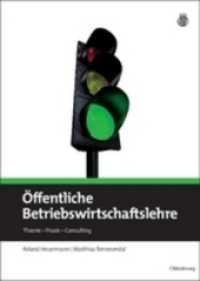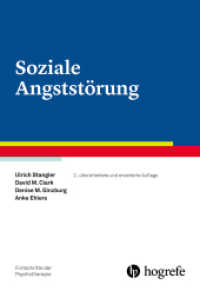Full Description
Word classes of a language are usually not homogeneous groups of lexemes that share the same morphological and syntactic properties completely. Rather, lexemes are usually grouped together that have some basic commonalities but may differ in detail, e.g., regarding their inflectional behaviour. In many cases, one can identify within a word class a large number of lexemes that conform to a certain morphological or syntactic pattern (often referred to as "core members") whilst there is only a comparatively small number of deviants ("peripheral members"). Examples abound: borrowings (in several word classes) may differ grammatically from native words, some complex verbs evade certain syntactic slots (such as verb-second position in German), mass and proper nouns differ grammatically from (other) nouns, and so on. In this volume, we focus on the diachrony of such phenomena. We consider that the study of change and stability can be particularly helpful in furthering our understanding of the diversity within word classes concerning, for example, the motivation for divergent grammatical properties.








